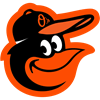Stacking is a popular strategy in tournaments because of the correlation scoring that occurs in baseball. Normally, stacking involves taking several hitters from a team or a particular game -- usually in consecutive batting order - which lines the player up for a big payoff if their "stack" produces during the contest.
Here's an example of how it works:
Say the Red Sox have one of the highest team totals in the league (about 4.7 runs) versus the Orioles. You could either take the 1-4 hitters or the 2-5 hitters for Boston. Let's say Mookie Betts gets a leadoff single and steals second base, Dustin Pedroia (up next) takes a walk, and David Ortiz gets hit by a pitch after that. This leaves the bases loaded for Hanley Ramirez, who's in a great spot to cash in at least a couple runs. Not only will you get the points from the 1-4 hitters based on their individual at-bats, but you'll also benefit from additional runs if Hanley can knock them in. Of course, you'll receive points for his RBIs, run scored, homer if applicable, and so on. If you were to leave him out, for instance, taking the 1-3 and 5 hitters instead, you'd miss out on all the fantasy points that Hanley scored in the cleanup spot. Another less fruitful scenario would be taking the 1, 3, 5, and 7 hitters -- you'd miss out on all the benefits of stacking because their correlation in the batting order isn't optimal.
On FanDuel, you can stack using a minimum of three games. You have a total of eight hitters in your lineup, with a maximum of four hitters per MLB team in your lineup. This means you can run two four-man stacks either from the same game or different games and a pitcher from a different game.
As discussed, the most optimal stacks are the 1-4 or 2-5 hitters, but often their salaries are on the high side, leaving only bottle-of-the-barrel pitching options. In this case, there are a few strategies you can use to free up some cash for a better pitcher:
In terms of hitting, the 3-6, 4-7, 5-8 and 6-9 batters are potential stacking sequences. Of course, the lower you go in order, the less upside there is for production, which reduces the value of the stack. This won't matter quite as much with teams that are loaded offensively like Toronto and Baltimore, but you'll often notice their player prices are higher than average to reflect their pop.
Alternatively, you can build your stack around an ace pitcher and just figure out a way to make the salaries work. Last week, a player won more than $10,000 by stacking the Red Sox and Orioles with Noah Syndergaard.
Ace with Stacking Both Sides - 1 Game
| POS | PLAYER | TEAM | SALARY | BATTING ORDER | POINTS |
| P | Noah Syndergaard | NYM | $11,400 | NA | 54 |
| C | Matt Wieters | BAL | $2,800 | 5 | 15 |
| 1B | David Ortiz | BOS | $3,900 | 4 | 30 |
| 2B | Ryan Flaherty | BAL | $2,200 | 9 | 12 |
| 3B | Travis Shaw | BOS | $2,600 | 6 | 9 |
| SS | J.J. Hardy | BAL | $2,400 | 7 | 45 |
| OF | Mookie Betts | BOS | $4,000 | 1 | 18 |
| OF | Jackie Bradley | BOS | $3,000 | 9 | 6 |
| OF | Mark Trumbo | BAL | $3,000 | 4 | 39 |
| TOTAL | 228 |
It's not reflected here since they're listed in order of position, but only Wieters and Trumbo were connected in the batting order. In this strategy, the player found an ace starting pitcher and chose a game featuring two high-scoring teams to stack his offense with.
It's imperative, though, to have some power bats in the stack. In this case, they were able to get six out of eight hitters with good power upside. With that much power potential, No. 9 hitters generally just need to break even or produce a slight loss in order to get overall results. Then, if the game goes according to plan and is high scoring on both sides, you could end up with a huge score like this one.
Here's another strategy where I wanted to stack the Rockies and Giants game earlier in the week, but it would only work if I found a value pitcher with decent upside. Also, because the salaries are so high on anyone playing in Coors, it's virtually impossible to stack the entire game. So, I decided that I wanted four prominent bats from the same game, a value catcher and second baseman, and two potential cheap power hitters. Here's what I came up with:
Value Pitcher - Mini Stack Both Sides (Coors)
| POS | PLAYER | TEAM | SALARY | BATTING ORDER | POINTS |
| P | Jerad Eickhoff | PHI | $6,600 | NA | 60 |
| C | Cameron Rupp | PHI | $2,200 | 5 | 3 |
| 1B | Brandon Belt | SF | $4,000 | 4 | 21 |
| 2B | Cesar Hernandez | PHI | $2,400 | 1 | 3 |
| 3B | Nolan Arenado | COL | $5,000 | 4 | 60 |
| SS | J.J. Hardy | BAL | $2,400 | 5 | 6 |
| OF | Hunter Pence | SF | $4,300 | 3 | 6 |
| OF | Carlos Gonzalez | COL | $4,800 | 3 | 27 |
| OF | Mark Trumbo | BAL | $3,200 | 4 | 0 |
| TOTAL | 186 |
Eickhoff was a slight home favorite with a very low total against the Padres -- a team that had been shut out three times already -- and Rupp was the cheapest catcher with the highest position in the batting order. Belt, Arenado, Pence and Gonzalez were the 3-4 hitters in the Coors game that I wanted to build around, which left the Orioles who had one of the highest run totals on the day. Trumbo/Hardy offered power upside, value and were also connected in the batting order in the cleanup and No. 5 spots.
All in all, these are just two types of stacking options. Some others to consider include:
• 4 hitters from Team A, 4 Hitters Team B
• 4 hitters from Team A, 3 Hitters Team B, 1 Hitter Team C
• 4 hitters from Team A, 1 hitter from Team B/C/D
• 3 hitters from Team A, 3 hitters from Team B, 2 hitters from Team C
• 2 hitters from Team A/B/C/D (Mini stack)
That's all for this week. Good luck out there.
If you missed any of my DFS articles this season, view the archive here.




































